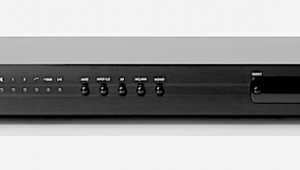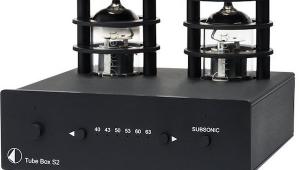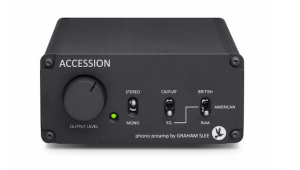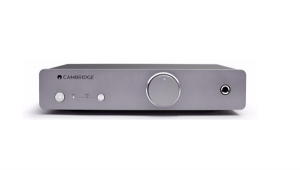The low noise, superb linearity, and excellent channel separation are definitely positive aspects. However, the concern about the low overload margin at 20kHz and above is something to consider, especially for use with certain phono cartridges. It's interesting to note the discrepancy in RIAA equalization between the channels, as highlighted in the measurements time calculator
Simaudio Moon LP5.3 phono preamplifier More Measurements
Last month, I followed up Michael Fremer's March 2007 review of Simaudio's versatile Moon LP5.3 phono preamplifier ($1400) with a set of measurements. In general, the LP5.3 got a clean bill of health, with very low noise, superb linearity, and excellent channel separation. However, I was concerned about its low overload margin at 20kHz and above, which I felt restricted the LP5.3 to use with phono cartridges with lower-than-normal output levels.
In his "Manufacturer's Comment" in the October issue (p.210), Simaudio's Lionel Goodfield explained why the Canadian manufacturer felt this overload margin would not be a problem in actual use. However, he was more concerned by the mismatch in RIAA equalization I had found between the channels (fig.1). Above 1kHz, the right channel shelved up 0.5dB higher than the left, over a broad enough range to be audible. "With regard to the RIAA channel mismatch above 1kHz, we're mystified," Lionel wrote. "Upon receiving JA's review text, we immediately measured five randomly selected production units taken from our stockroom, as well as one of our engineering prototypes. They all yielded significantly better measurements with regard to both channel mismatching and error-curve shaping."

Fig.1 Simaudio Moon LP5.3, serial no. 1571715, phono-stage RIAA error at 1mV input at 1kHz (0.5dB/vertical div., right channel dashed).
It did look to me as if there was an out-of-spec capacitor or resistor in the right channel's high-frequency equalization network, so I asked for a third sample. (My sample had been a different one from the one auditioned by Michael Fremer.) My original sample's serial number was 1571715, the new sample's 1571721, suggesting that they had been manufactured close together in time.
Fig.2 shows the RIAA error curve for the third LP5.3, measured under identical conditions to the second. It is significantly better: whereas the first sample's response had been –0.05dB left, –0.1dB right, +0.26dB left, and +0.75dB right, this sample's response fell between 0.08dB limits. The channels are now very well matched overall, and the shape of the error curve is less boosted in the highs.

Fig.2 Simaudio Moon LP5.3, serial no. 1571721 phono-stage RIAA error at 1mV input at 1kHz (0.5dB/vertical div., right channel dashed).
It does look, therefore, that my first sample of the LP5.3 was a rogue.—John Atkinson
- Log in or register to post comments


















































